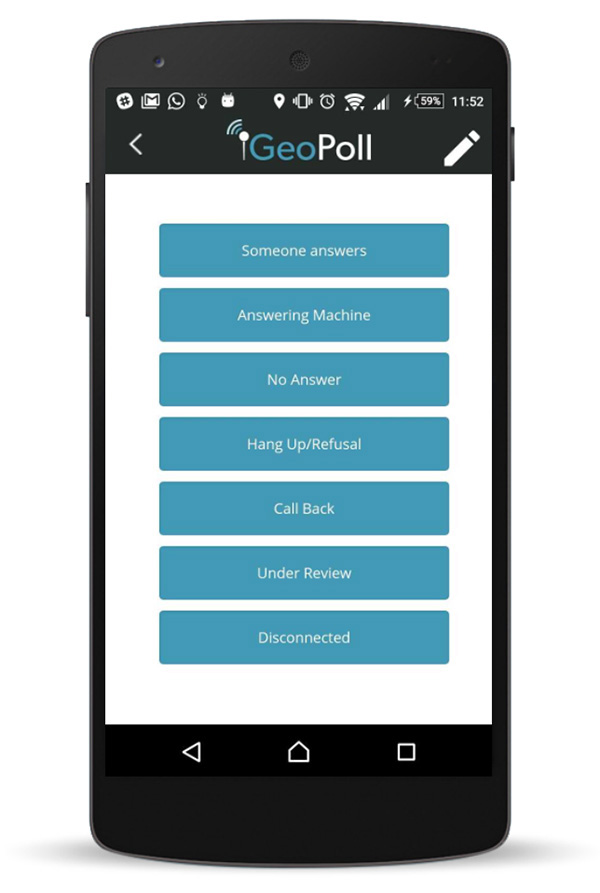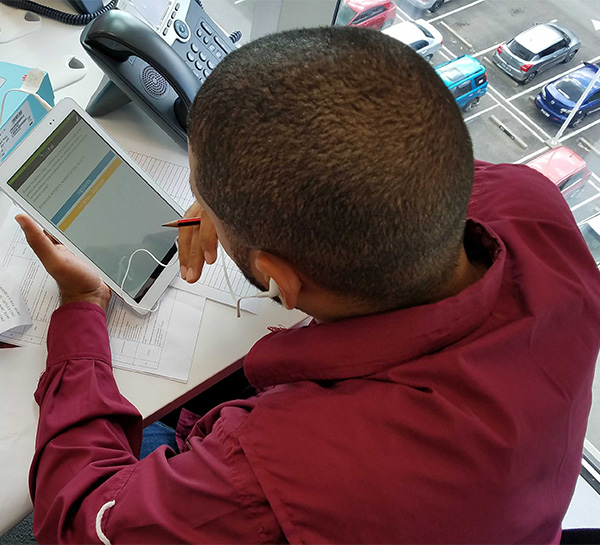What is CATI?
CATI stands for Computer Assisted Telephone Interviewing. CATI is a common research mode in which interviewers conduct surveys via telephone calls using a computer-assisted method, such as a software system loaded onto a computer or mobile device. In the CATI survey method, interviewers (also called survey enumerators) use CATI software which guides them through a survey, records responses, and monitors response and completion rates, among other features. The CATI software or application houses the survey design, including the full questionnaire and related instructions, survey routing or logic, and all questions and answer options.
Benefits of CATI Survey Research
 CATI improves on traditional voice call methods, which use a pen-and-paper system to review questions and record answers. Using a CATI application or software, data is securely stored, and interviewers can focus on the interview rather than other items such as survey routing. While each CATI software has unique features, general advantages of CATI software include:
CATI improves on traditional voice call methods, which use a pen-and-paper system to review questions and record answers. Using a CATI application or software, data is securely stored, and interviewers can focus on the interview rather than other items such as survey routing. While each CATI software has unique features, general advantages of CATI software include:
- Performs survey routing automatically based on the inputted answer; If a respondent answers ‘yes’ to a specific question, the CATI software will automatically display the correct next question
- Inputs and uploads data to a central system automatically, removing the need for manual data input based on pen-and-paper questionnaires. This dramatically reduces data processing errors and time spent uploading data
- Stores questionnaires digitally, so they can be updated or changed on-the-fly if issues arise with question-wording or skip logic
- Automatically tracks survey production statistics, including response rates, completion rates, dropoff rates, and more
- Allows for remote oversight of interviewers through analytics, including total interview length, individual question length, and response patterns, which can be automatically fed into a quality assurance dashboard and monitored regularly
- Provides recordings of interviews which can be examined for further data quality checks
- Compared to other voice call research methods, such as Interactive Voice Response, CATI surveys are a closer alternative to face-to-face interviews. This is because they are interviewer-administered, allow for follow-up questions from the interviewer, and can gather qualitative data through open-ended questions.
Challenges of CATI Survey Research
Some challenges should be taken into consideration when embarking on a CATI research project. These include:
- Interviewers must be trained not only on the specific questionnaire but also on the CATI software they are using, as each can have a different flow and features
- If questionnaires are scripted incorrectly into the CATI software, interviewers may not notice and incorrectly administer surveys
- Open-ended answers still need to be typed into the CATI software, which can leave room for error when transcribing
- Depending on the CATI software, it may be difficult to modify previous answers as navigating backwards is more challenging than when using pen-and-paper questionnaires
While researchers must keep these challenges in mind, they can be mitigated through interviewer training programs and regular cross-checks of questionnaire scripting, among other quality control measures.
How CATI Research Works
 The CATI research process may differ slightly based on the research group being used. When working with GeoPoll, who has an existing network of over 40 call centers located around the globe, the process for a new project typically follows these steps:
The CATI research process may differ slightly based on the research group being used. When working with GeoPoll, who has an existing network of over 40 call centers located around the globe, the process for a new project typically follows these steps:
Phase 1: Concept and Initiation:In this phase, GeoPoll will discuss the project specifications with the client, conduct a feasibility assessment, decide on a sampling frame and sampling approach such as random digit dialing, and put together a budget based on the targeting, sample size, questionnaire length, and other considerations.
Phase 2: Project Definition and Planning: Next, GeoPoll’s execution team will work with the client to design a questionnaire using best practices for CATI survey design, translate the questionnaire, and conduct extensive project-specific interviewer training. For some projects, GeoPoll will conduct a pilot that can be used as a quality check before the study goes into full production.
Phase 3: Survey Production and Monitoring:Once the planning is completed GeoPoll’s team will move a survey into the production phase. In this phase, phone numbers are generated or provided to interviewers who begin making live calls. Throughout survey production, survey data and analytics which demonstrate interviewer progress are regularly monitored to ensure the highest-quality outputs. Call recordings are also used for an additional level of quality assurance.
Phase 4: Data Analysis and Outputs:Once the data is collected and quality checks are undertaken, it is passed onto GeoPoll’s research team for analysis. The research team performs another round of quality checks and then prepares data in the desired output, including raw data files, written reports, excel tables, and more.
CATI vs CAPI and CAWI
 One common question surrounding Computer Assisted Telephone Interviewing is how it compares to other modes. You can read this post to learn more about how CATI compares to IVR, an automated voice-call mode that does not use live interviewers. Other methods CATI can be compared to are CAPI, Computer Assisted Personal Interviewing, and CAWI, Computer Assisted Web Interviewing. CAPI is a face-to-face research mode which, similarly to CATI, is aided by a software system that enables the interviewer to view questions and be automatically routed through a survey.
One common question surrounding Computer Assisted Telephone Interviewing is how it compares to other modes. You can read this post to learn more about how CATI compares to IVR, an automated voice-call mode that does not use live interviewers. Other methods CATI can be compared to are CAPI, Computer Assisted Personal Interviewing, and CAWI, Computer Assisted Web Interviewing. CAPI is a face-to-face research mode which, similarly to CATI, is aided by a software system that enables the interviewer to view questions and be automatically routed through a survey.
Many of the benefits listed above for CATI apply to CAPI surveys. Using CAPI instead of a pen-and-paper method reduces data input errors and allows for remote oversight of interviewers when they are in the field, often showing where they are through GPS and tracking metrics such as length of the interview. A benefit of CAPI over CATI is that you can reach a wider population, as CAPI does not require respondents to have mobile phones. However, CAPI surveys can take a long time to conduct as interviewers need to travel from house to house to gather survey responses.a
Computer Assisted Web Interviewing is another name for link-based or online surveys. These surveys are opened by respondents in a web page, who complete the questionnaire themselves. CAWI surveys are self-administered, so do not allow for the type of follow-ups that CATI provides for, and only reach those with an internet connection. Benefits of CAWI or any online survey mode are the speed at which a large group of respondents can be surveyed, and the relatively low cost.
CATI Software in Africa, Asia, and Latin America
GeoPoll conducts CATI surveys out of over 40 call centers we operate throughout Africa, Asia, and Latin America, using our own proprietary CATI application. GeoPoll’s CATI software application was built specifically for use in countries in Africa, Asia, and Latin America. It has features including an offline mode, call recording, built-in quality checks, multi-lingual capabilities, and more. To learn more about GeoPoll’s CATI services or run your own CATI survey through GeoPoll, please contact us today.



